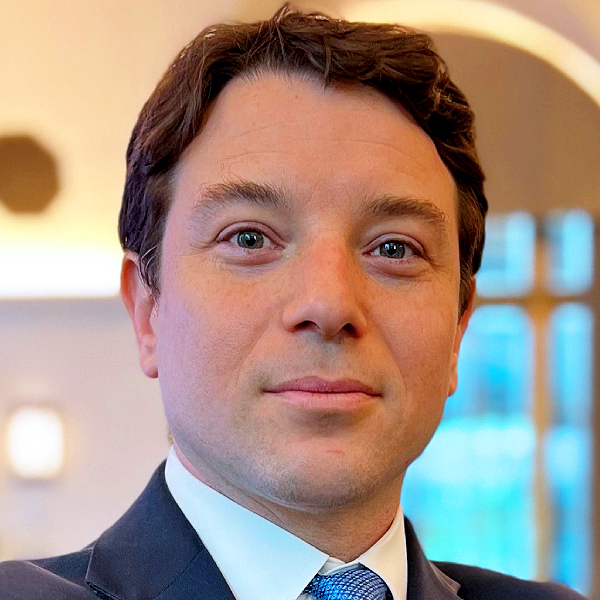
Housing affordability is a challenge throughout the Federal Reserve’s Second District, putting a strain on household finances and communities in urban and rural areas, big cities, and small towns. The Community Development team at the New York Fed has created a body of work around the development, financing, and rehabilitation of multifamily affordable housing, publishing papers on affordable housing investments by private investment vehicles and pension funds. The team has hosted events on local policies and approaches to developing and rehabilitating affordable apartments, as well as efforts by faith-based organizations, hospitals, and institutional investors to increase the supply of affordable homes.
The New York Fed brought together policymakers, investors, banks, and community-based organizations on September 15 to discuss institutional investment in multifamily affordable housing. Panelists included investors from banks, private equity, foundations, and pension funds.
Some of the day’s key themes:
Defining Affordability
Panelists discussed what level of area median income qualifies renters for the properties they finance or own. “Affordable housing is very broadly defined,” said Pamela West, a portfolio manager and head of U.S. affordable housing at Nuveen Real Estate, a global investment manager. Waving to the others on her panel, she said, “I bet all of us have a different definition for what it is.” Nuveen defines the people who qualify for its affordable housing as earning 80 percent of their area’s median income or below.
Sydne Garchik, founder and president of MRK Partners, a privately held real estate investment and asset management company, said her company focuses on serving those making up to 60 percent of area median income.
Garchik said her firm applies different demographics to define affordable housing. “For example, we’re doing a new construction deal up in San Francisco and we’re going to target a very young demographic,” she said. “If you live in San Francisco and you make up to $95,000, you can live in this community.”
Nina Tschinkel, a director at asset management firm Catalyst Opportunity Funds, described the company’s income targeting for affordable housing as being aimed at the “missing middle,” or renters earning 50 to 80 percent of area median income.
“These are households who earn too much to qualify for federally subsidized housing, but who are increasingly being squeezed by housing costs in high-growth markets,” Tschinkel said. “These are the nurses, the teachers, the firefighters, the bank tellers, really the backbone of the American workforce that’s increasingly being priced out of the communities they work in, or live in, or grew up in.”
Why Are Investors Interested in Multifamily Affordable Housing?
The significant unmet demand for affordable housing units means there’s a guaranteed market, speakers said. Additionally, institutional investors say multifamily affordable housing is a stable asset that doesn’t experience the dramatic swings in values other types of property see. These characteristics mean affordable housing investments may fit into a broad spectrum of investment goals, including impact goals and economic returns.
Tenant Experience and Services
Panelists described the importance of providing services to residents of the apartment buildings they own, manage, or finance. Those services can include job training, scholarships, financial literacy, after-school programs, and health and wellness programs. Panelists talked about how offering these services on-site can improve residents’ well-being and make their housing a better place to live.
Tschinkel talked about taking a thoughtful approach to ground-floor commercial space in the firm’s urban buildings, matching tenants with the needs of local communities. This can mean “bringing food co-ops to food deserts and financial services providers to banking deserts,” she said. “So, it’s really a housing model, but also a housing-plus model.”
Growth of Institutional Capital in Multifamily Affordable Housing
Investor interest in affordable housing has expanded over the last 15 years, speakers said.
“Fifteen years ago, there weren’t many, if any, pension funds or institutional capital at the table, only high-net-worth investors, family offices, and banks seeking CRA (Community Reinvestment Act) credits,” West said.
As private transactions in affordable housing increase, so does the need for accurate and timely reporting on how assets are doing, said Dan Alger, a managing director and head of the Urban Investment Group at Goldman Sachs. This information could have significant impact on other institutional investors’ interest in these types of investments, he said.
Bottom Line
Garchik said her company doesn’t look at their projects as “affordable housing.” Instead, she said, her company looks at it as “housing that’s needed to serve the people who serve the community.”
The event was part of the New York Fed’s Community Development work, which includes a focus on household financial well-being.

Maria Carmelita Recto is a community development outreach associate at the New York Fed. She focuses on issues related to household financial well-being.

Jonathan Kivell is the Director of Community Investments at the New York Fed. He focuses on issues related to community development finance and household financial well-being.
The views expressed in this article are those of the contributing authors and do not necessarily reflect the position of the New York Fed or the Federal Reserve System.










